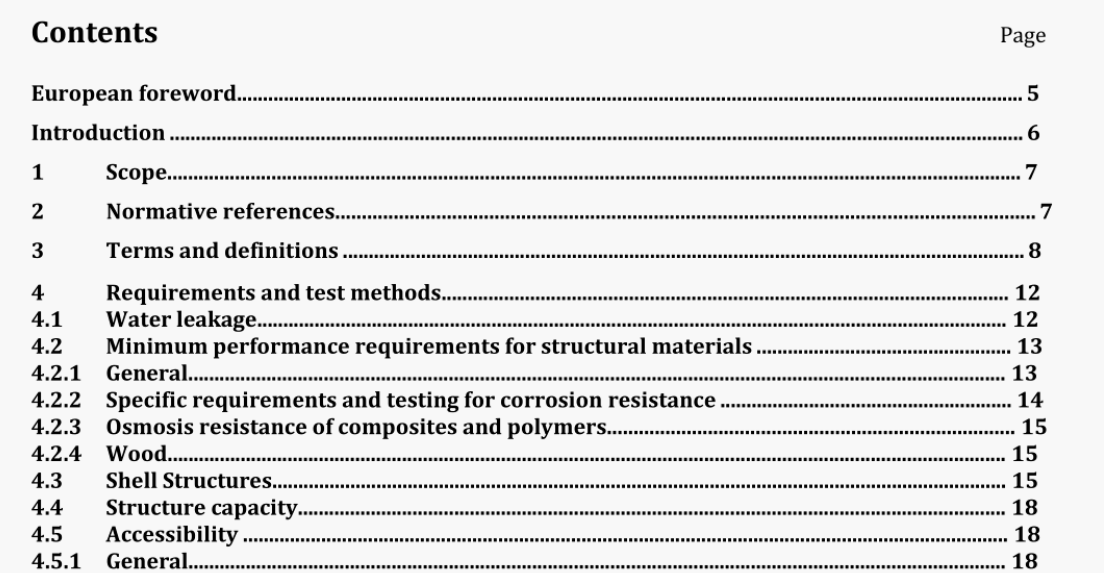BS EN 17125:2018 pdf download.Domestic spas/whirlpool spas/hot tubs – Safety requirements and test methods
1 Scope
This document specifies safety requirements and test methods for domestic spas/whirlpool spas/hot tubs (see 3.2) for indoor and/or outdoor use, covering the following:
– portable spas including inflatable spas;
– exercise spas (factory-built or field-engineered);
– Scandinavian hot tubs;
– field-engineered spas;
– any associated equipment.
– This document also provides advice and guidance for installers and maintainers of domestic spas/whirlpool spas/hot tubs.
This document is not applicable to:
– any type of swimming pool (domestic or public);
– mini-pools according to EN 16927;
– public spas (public use according to EN 15288);
– paddling pools according to EN 71-8;
– spas specifically intended for physical/ medical therapy;
– spas specifically intended for beauty therapy;
– flotation tanks and flotation pools;
– bath tubs (including whirlpool baths);
– natural spas (name used to describe a bathing area, which is filled with untreated geothermally heated water);
4.4 Structure capacity
The manufacturer or constructor shall determine the structure capacity and the number of bathers that the equipment can accommodate. Where applicable, the minimum and maximum water levels should be determined. Most factory-built spas have a freeboard design, with a defined internal fill level to leave a gap between the water surface and the top of the spa. The freeboard on all spa shells shall be designed to accommodate the water displacement of the specified number of users to limit splash out. Where a spa is constructed as a deck level [overflow) design, the channel shall be designed such that the water does not typically spill over the spa rim and onto the surrounding area where the spa is located. The overflow spa shall be equipped with a buffering capacity tank able to simultaneously contain at least, when the water volume is at its maximum authorized level: a) the water volume displaced by the maximum number of bathers; b] the water volume necessary to ensure the overflow; c) a water reserve to make sure the pump[s) will not lose prime. d) when the backwash water is taken from the balance tank, then the volume may have to be taken into account for the total volume of the balance tank. NOTE Each typical bather will displace approximately 0,06 m3 (60 I) to 0,08 m3 [80 I) of water. Water capacity shall be defined at the static level (without bathers).
BS EN 17125:2018 pdf download
